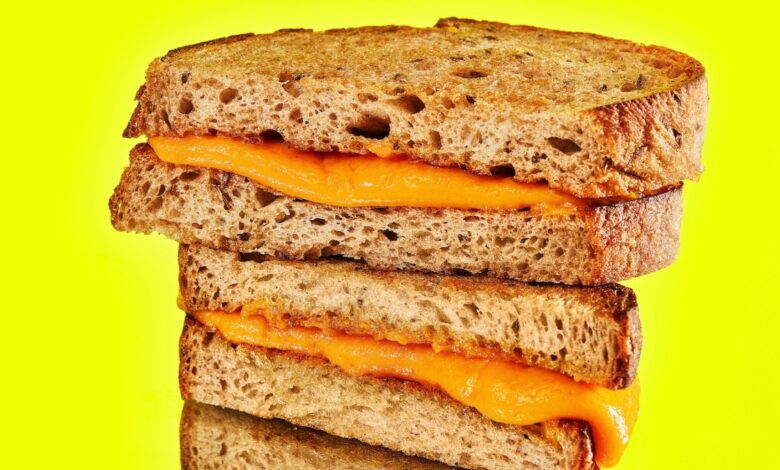Who cut the plant-based cheese? Plonts did with microbes, and it’s stinky

Among plant-based alternative proteins, plant-based cheese continues to have a function and taste problem.
That’s where Plonts comes in. Company founders Nathaniel Chu and Josh Moser say microbes are the key to what will fix the taste, smell, flavor, stretch and melt of plant-based cheese. In fact, it’s the microbes that give cheese its distinctive stink.
Chu, CEO, began his career as a biologist studying complex systems from coral disease to feces — so literally an expert in stink. While working on his Ph.D. in biological engineering at MIT, an article on how much carbon it took to get traditional meat and dairy from farm to fork inspired him. Especially the cheese, which he said was the third most resource-intensive food after beef and lamb.
“I remember thinking, I love cheese, but how could this be?” Chu told TechCrunch. While researching alternatives, he found that flavors, for example, sharpness of a cheddar and the nuttiness of Parmesan, come from microbes. If he was able to find the right microbes, he could create fermented food, in this case cheese, from many different ingredients, including plants.
Chu tested that theory in 2019 by renting the corner of a pizza shop and started making cheese. Figuring out the science took a few years, but finally the first proof of concept came in the form of a plant-based cheese that he describes as “nutritious, inexpensive and sustainable.” During the course of that work, Chu met Moser and got Plonts going, which went by Tezza Foods in those early years.
Why microbes? Plant-based cheeses are made from things like bacteria and fungi. However, “the microbial composition of fermented food plays a pivotal role in shaping their [cheese alternatives] sensory and nutritional attributes,” according to research done by Brazilian and French food scientists in a paper published in ScienceDirect, a peer-reviewed literature database.
This includes flavor and texture development, a more nutritious option — aka more protein — and better health benefits in the final product.

How Plonts makes its cheese
Plonts’ cheese is made from soybeans, which are one of the most efficient ways to grow protein, according to Chu. Soybeans themselves are not very flavorful, and that is where fermentation — similar to the way beer is made — and aging, similar to the way cheese is made — help to create flavor versus using natural flavors, Moser said.
The process starts with “milk” made from plants. It’s coagulated to separate out the curds and whey and then made into a solid and aged. Then comes the mixture of microbes to create the right flavor.
“Cheese is an incredible product because it’s complex,” Chu said. “Cheese is not a single flavor, it’s hundreds of different flavor molecules.”
That’s why he says microbes, whether mold, bacteria or yeast, are important to create that flavor. The microbes themselves are tiny sacs of hundreds of different enzymes with many different combinations.
“Figuring out the balance is what gives us the diversity of flavors that we have today,” he said.
He says using microbes also results is a more protein-rich cheese because microbes feed off of protein to thrive. Plonts claims its cheese has around 3 grams of protein per one-ounce serving versus the often zero protein of other kinds of plant-based milks.
Long road ahead for plant-based cheese
Plonts is not the only company working on cheese. For example, Climax Foods has its cheese in just over a dozen restaurants, while Boermarke, Brown Foods, Better Dairy, Miruku and Perfect Day are developing cheese.
Meanwhile, NewMoo recently emerged from stealth with its casein proteins technology. Even big companies are giving plant-based cheeses a-go, including multinational dairy firm Bel Group, which launched plant-based versions of its The Laughing Cow cheese products in Canada.
That said, there’s still a long road ahead for startups in this sector of plant-based alternatives. Plant-based cheese represents less than 0.5 percent of pound sales of the total cheese market, according to figures from Circana and Good Food Institute. Add to that, both dollar and pound sales declined between 2022 to 2023, 3% and 6%, respectively.

The challenge is actually one of the key things that keeps Chu and Moser motivated, Moser said. The GFI report says foodservice will provide a massive runway of opportunity for the plant-based cheese market.
“It’s a signal that existing products aren’t meeting consumer expectations on the three dimensions that matter most: taste, cost and nutrition,” Moser said. “We have little reason to believe that plant-based cheese can’t be as successful as plant-based milk—they’re both dairy products after all, with similar purchasing behaviors like lactose intolerance, dairy allergies, and cholesterol as well as sustainability and animal welfare concerns.”
Similar to its peers, Plonts is starting with cheddar, currently working on making both loaf and slices versions. Its market entry is in foodservice, and the loaf is what the company sells directly to its restaurant and deli customers in the Bay Area and New York. Those include Court Street Grocers and Shuggie’s Trash Pie. Chu and Moser say at some point the product will be sold via retail.
Buoying the company is a $12 million seed round of venture capital Chu and Moser raised in 2022. Investors include Chris Sacca’s Lowercarbon Capital, which led the round alongside investment from Accelr8, Peter Rahal’s Litani Ventures, Pillar, Ponderosa Ventures, and a group of angel investors.
Since then, Plonts has been heads down building its pilot plant and getting its product ready to be sold into the foodservice market.
Source link



